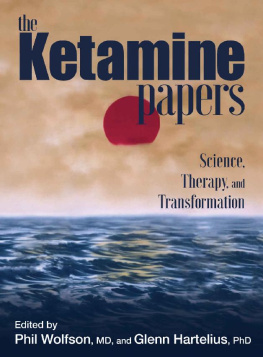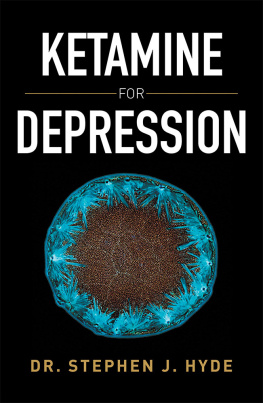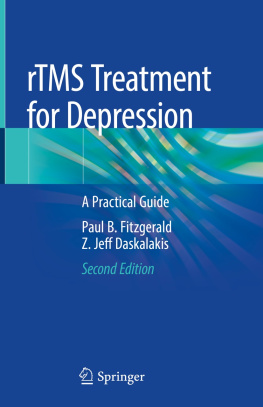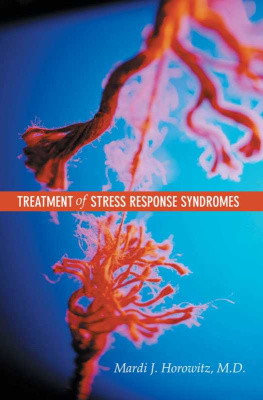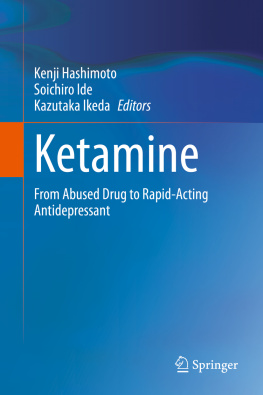The Ketamine Papers
Welcome to an awakening to a jewel of opportunity for spacious mind, clarity and a relief from pain and suffering. Like all jewels, the ketamine space has its luster, facets, and its flaws. Ketamine journeys can be healing of trauma and depression, transformative of mind and heart, lessen the tension of ego and attachment, and enlighten and support connection and love. This book is as diverse in its presentations as are the range of ketamine applica- tions, dosages and routes of administration. Ketamine is not for everyone. Not everyone responds. Not everyone finds it an easy medicine. For some, there are immediate awakenings. For most, it takes time for effects to manifest. In the moment of its influence and often afterwards, it may well be the most pro- found internal experience of mind.
Phil Wolfson, M.D.
The Ketamine Papers
Science , Therapy , and Transformation

Multidisciplinary Association for Psychedelic Studies
Proceeds from the sale of this book support MAPS non-profit research into the benefits and risks of psychedelics and medical marijuana.
An earlier version of some chapters in this book appeared as articles in the International Journal of Transpersonal Studies (transpersonalstudies.org).
The Ketamine Papers: Science, Therapy, and Transformation ISBN-13: 978-0-9982765-0-2
ISBN-10: 0-9982765-0-2
Copyright 2016 MAPS
All rights reserved. No part of this work may be reproduced or transmitted in any form by any means electronic or mechanical except as expressly permitted by the 1976 Copyright Act or in writing by the publisher. Requests for such permission shall be addressed to:
Multidisciplinary Association for Psychedelic Studies (MAPS) PO Box 8423, Santa Cruz, CA 95061
Phone: 831.429.6362, Fax 831.429.6370
Email: Published in 2016 by MAPS.
Cover art: Reproduction of original painting (date and artist unknown). Book and cover design: Sarah Jordan
Copyediting: Linda Stephenson Indexing: Kelly Burch
Printed in the United States of America by McNaughton & Gunn, Saline, MI
Dedication
For Noah, who always guides and inspires.
For Eric, who always loves and exceeds all expectations.
For all those who have taught me by being themselves and more.
Phil Wolfson, M.D.
For my mother, Grethe Hartelius, who passed from this world on November 20, 2015. May she find rich contentment on her journey.
Glenn Hartelius, Ph.D.
May this bit of knowledge and exploration enter the cultural stream
to benefit all beings.
Acknowledgements
If not for my dearest friend, Joel Alter, deceased now for some years to my great loss, and his wife, Cheri Quincy, this book would not have happened. Shot into the cosmos, feeling as if I now knew deaths format, and in the absence of my Phil formthat I was indeed energy itselfI took the stance that once was definitive and I would not return as there was nothing more to be learned. I had experienced what ketamine was about. Quite some years later I thought, maybe and from there, we are now here with this book.
My great good fortune has been to be a member of a medicine circle, now for over 16 years. My brothers have been my friends and teachers and this book has been greatly influenced by their contributions and critical input. With such a long and sustained historywe have the same composition as when we beganthere has come into being a sense of group mind that makes our individual beings seem much more connected and larger than the containers of selfa bit of the ecstatic to be sure. I am with deep gratitude for their love and mindfulness.
My partner, Julane Andries, has been my colleague and co-therapist in the develop- ment of a ketamine therapeutics. As a team that emanated from our MAPS-sponsored MDMA study of anxiety in subjects with a life-threatening illness, her patient work, support and conscious collaboration has had a major impact on the nature of our work as therapists. I am deeply grateful for her contributions.
My colleague and friend, Glenn Hartelius, is co-editor of The Ketamine Papers, and as the main editor of the peer-reviewed International Journal of Transpersonal Studies, published the forerunners of a number of the articles included herein. Glenn has been steadfast in his work for the book and has been of great support for its creation.
Rick Doblin has been a great benefactor and his support for publication of The Ket- amine Papers has been unflinching. We thank Brad Burge and Sarah Jordan of MAPS for their work, guidance, and assistance in structuring the form of the book.
My great thanks to Richard Yensen and Donna Dryer for personal support and critical input. Michael Broffman and Michael McCulloch have been warm and unwavering in facilitating our presence at The Pine Street Clinic, where we do the ketamine work. Terry Early generously invited us into his clinic to sit in at his sessions for a memorable day that facilitated our own development of the ketamine work.
Sasha Shulgin was my great facilitator, mentor, and friend. Not a therapist himself, nor ever intending to act as one, his human wisdom, singular devotion to the truth, and his constant search for awakened, expanded mind were and are exemplary for meand for all of us.
For the love that sustains the effort, my son Eric is my great benefactor.
Phil Wolfson, M.D.
Contents
The Ketamine Papers
Introduction to The Ketamine Papers
Ketamine:
Its History, Uses, Pharmacology, Therapeutic Practice, and an Exploration of its Potential as a
Novel Treatment for Depression
Phil Wolfson, M.D.
It has been given the role of the new potential savior in the psychiatric medicine bag that is generally recognized as having gone stale. With a putative, and disputed, novel mechanism of action (MOA) in the much more widely brain dispersed glutamatergic neurotransmitter system, it has been promoted as a key to relief of treat- ment-resistant depression (TRD) and an increasingly wide range of other maladies for which drugs such as SSRIs and SNRIs have had limited results and for which virtually nothing new has been added for over a decade ( Duman & Aghajanian, 2012; Nemeroff, 2007; Little, 2009). Ketamine has come to be well regarded for the immediate or rapid relief of depressive symptoms; for potentially providing an acute interruption of suicidal intent; and for the control of agitated, suicidal, and aggressively psychotic individuals in the ER setting. This new ketamine awareness has added to the drugs more traditional stock as a widely used dissociative anesthetic and analgesic in human and veterinary medicine. Respectfully, and not to be minimized and dispensed with, is ketamines long history as a rapid-onset, relatively short-acting powerful psychedelic, with a reputation for fantastic mental journeys, transformative experiences, and alas, a potential for addiction ( Jansen, 2004; Kolpetal., 2014). Ketamine is the only legal potentially psychedelic medicine in useas a Schedule III substance with an indication as a dissociative anestheticand recently in the emergence of extensive and validated off-label usages.
This book represents a diverse but shared excitement for the development of a ketamine therapeutics. Antidepressant responses to ketamines administration for other reasons such as analgesia and anesthesia were known, if not widespread, before researchers at
Na tional Institute of Mental Health (NIMH) in the late 1990s began to assess ket amines potential at low-dosage levels, attempting to exclude or at least limit the psychedelic effects of the drug (Collins et al., 2010; Krystal et al., 1994; Zarate et al., 2006). Prior, relatively early on in ketamines use in anesthesia, descriptions arose of a disturbing emergent syndrome, confusing and troublesome experiences having been reported by some patients exiting the ketamine space. Researchers suspected that there might be a boundary where those effects would be minimal while the novel effect as an antidote to depression would manifest.

